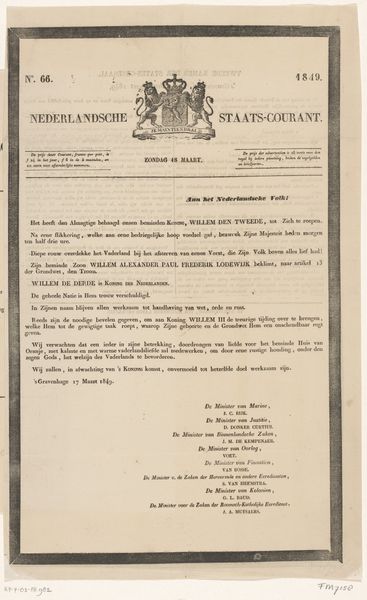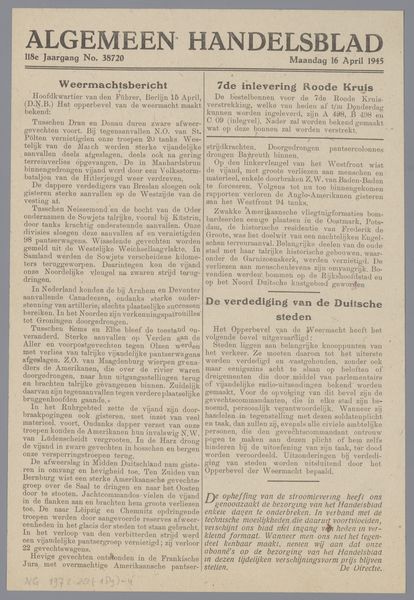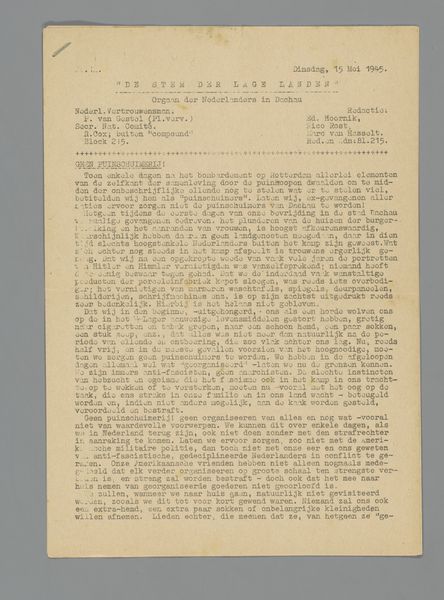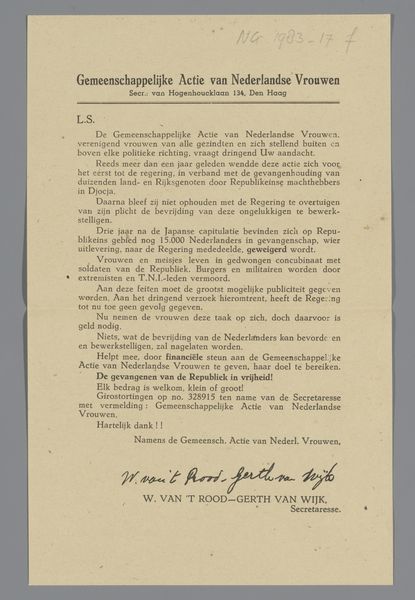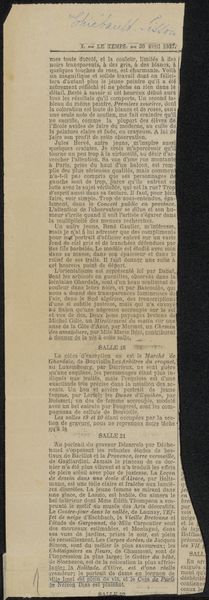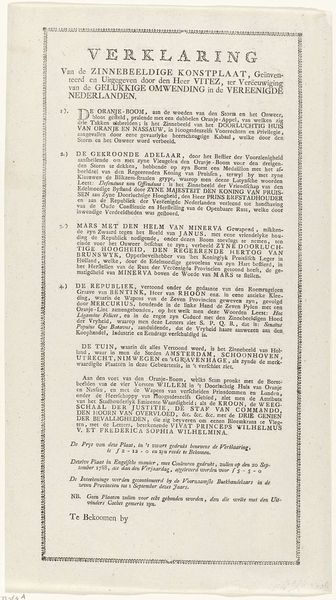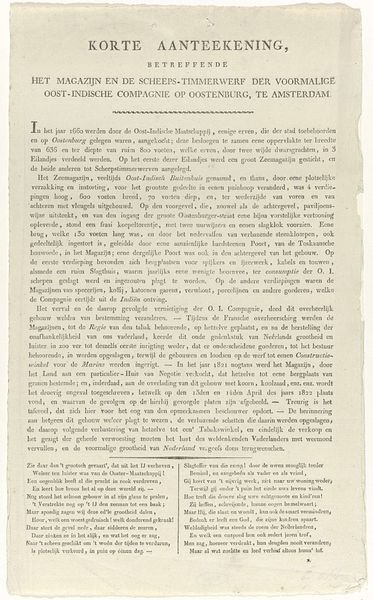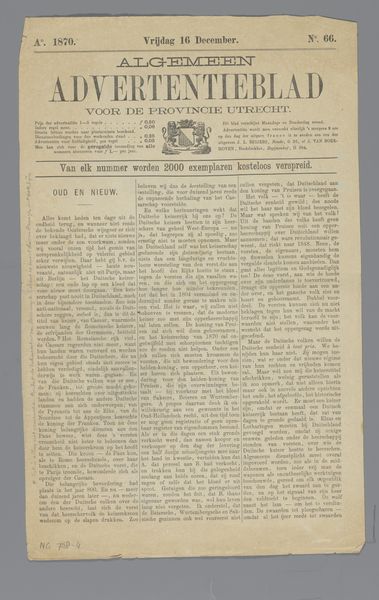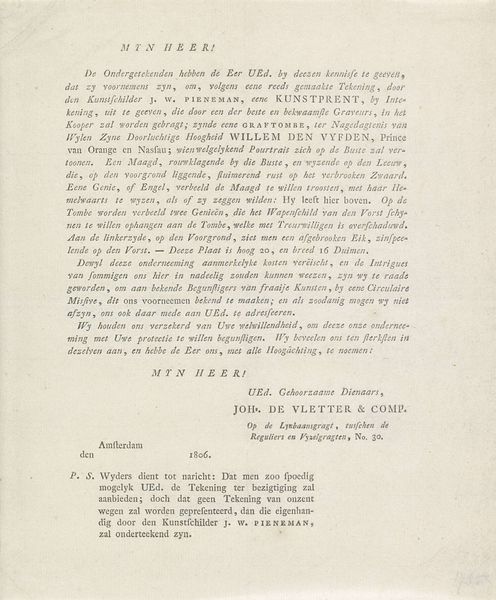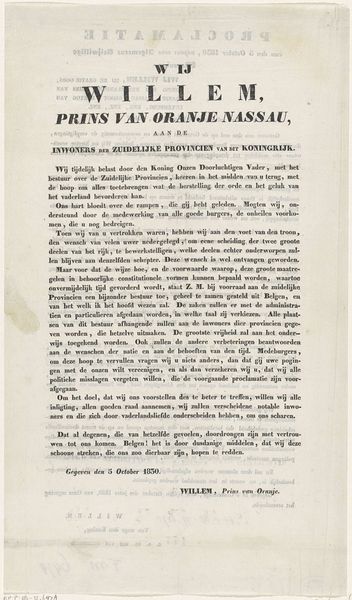
print, paper, photography
# print
#
paper
#
photography
#
historical photography
Dimensions: height 320 mm, width 255 mm
Copyright: Rijks Museum: Open Domain
Editor: Here we have “The Flag of the Acehnese Captured at Baros, 1840,” dating to 1873. The artist is Abraham Wilhelm Theodorus Juynboll, and the piece is a print on paper using photography. This image seems like a document or a certificate. What do you see in this work? Curator: The image certainly presents itself as a document, yes, but it's layered with potent symbols of power, conquest, and national pride. I'm particularly struck by the visual absence of the flag itself. This void speaks volumes! Editor: The absence? I hadn’t considered that! I was focused on the text. What does the absent flag tell us? Curator: The flag's absence, especially in a piece titled "The Flag of the Acehnese Captured…," invites reflection on what its capture represents. A flag is not just cloth; it’s a stand-in for nation, spirit, identity, and cultural memory. The capture, recorded and visually presented this way, broadcasts a cultural continuity of colonial might. Consider, what emotions are being manipulated through the emphasis on capture over tangible evidence? Editor: That's a chilling perspective. I initially viewed this as a simple historical record, but you’re right. The very act of displaying the absence is a powerful assertion. So the symbolism resides as much in what is not there as in what is. Curator: Precisely! And thinking about the act of recording the flag's capture for posterity reveals the colonizers' understanding of how images can transmit psychological messages about cultural domination over generations. How does it affect you, knowing that this very image was intended as propaganda? Editor: I find it deeply unsettling. It definitely shifts my understanding from a document to a symbol of power dynamics and lasting implications of cultural suppression. I’ll never look at historical documents the same way! Curator: Good, you are developing an informed criticality. Considering visual representations, their origins, and embedded intentions ensures we learn the broader history beyond the immediate subject.
Comments
No comments
Be the first to comment and join the conversation on the ultimate creative platform.
